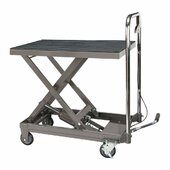Very interested in learning more about the emphasized part, in particular as to how this can be effectively done in a largish house. I'm much, much earlier on my journey than you and this sounds like a great practical step to learn and work on.
Firstly, I did it the hard way. Most people would just pull some breakers wires out of their main circuit panel and just use their inverter to feed those circuits. Take 2-4 breakers out, run circuits to auxiliary panel wired from inverter. Put 50 amp breaker in house panel that feeds the inverter. DONE>
I decided to start with what I considered critical loads and "majority of the time on" lowish loads. I started with my fridge, basement freezer and bedroom. The kitchen shared a wall with the second story bedroom. So I fed up 4 circuits. 2 to the kitchen and 2 to upstairs. One outlet on an independent circuit fed from aux load panel.
Basement needs special attention because of code compliance. Wires not run thru walls typically need conduit or EMT You will need to research code compliance for your new panel, basement wire runs, and how many outlets you need and wire gauge.
Wiring an additional outlet is pretty easy.
On the first story, pick your spot, find out where it lands in the basement, and then drill up, very carefully into the wall cavity.
Same idea on the second floor but its a lot more complicated.
For the second story: Find where you want the outlet.
Find the same spot in the attic. Drill down into a wall cavity on the second floor. Watch out for load bearing walls, pipes, preexisting electrical and such. Then you can use an electricians fishing rod to traverse between the first floor. Start in the attic and push it down thru your holes. If you measured properly this will be not terrible but still might take a long time. If you have trouble you could open up the wall on the first floor and hand feed it. Tie romex to the rod that is now in the basement and pull it up into the attic. from here you can go anywhere on the second floor by going down into the wall cavities.
This is a very simplistic way to put it. You should do a lot of research before doing this.
If I can do it, you can too.
What I am left with is a solar outlet, right next to a normal outlet. That way I can choose what I want to power with solar and have more circuits. If the grid ever goes down I probably wouldnt notice untill I tried to turn on a light.
Speaking of lights, rewiring a first floor ceiling light in a 2 story house is the biggest pain in the ass you will find.

A big reason I did this is so I can use ALL the power from my panels. Nothing hurts like a full battery at 11:30 am.




